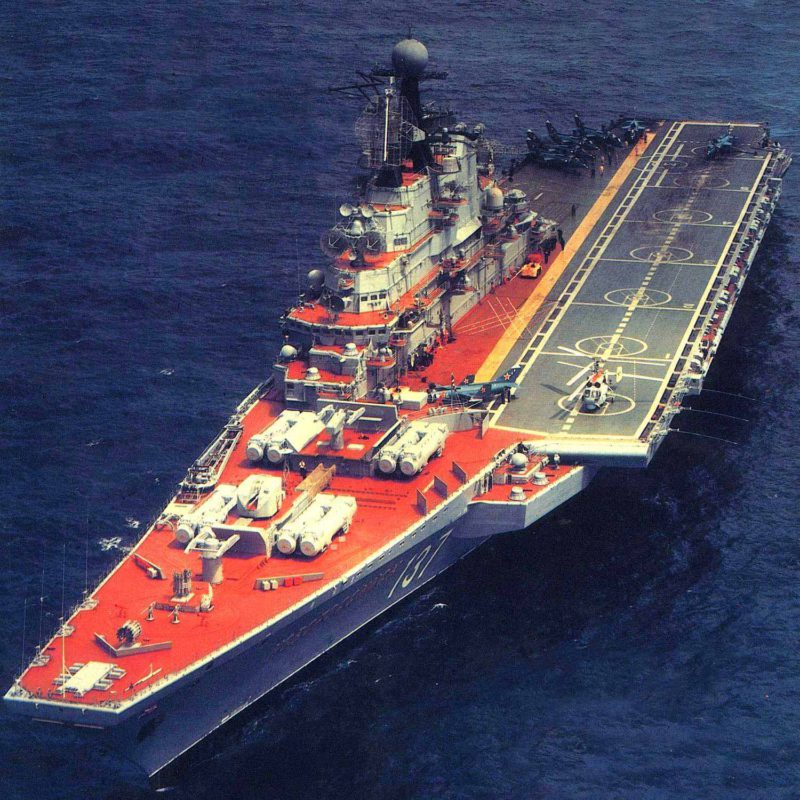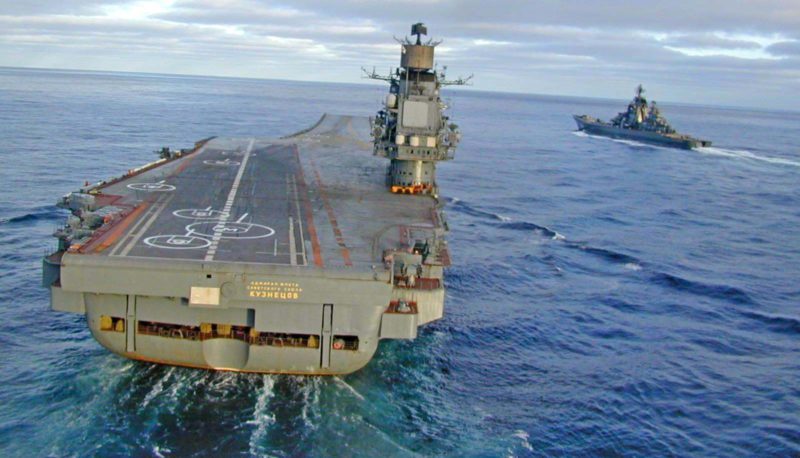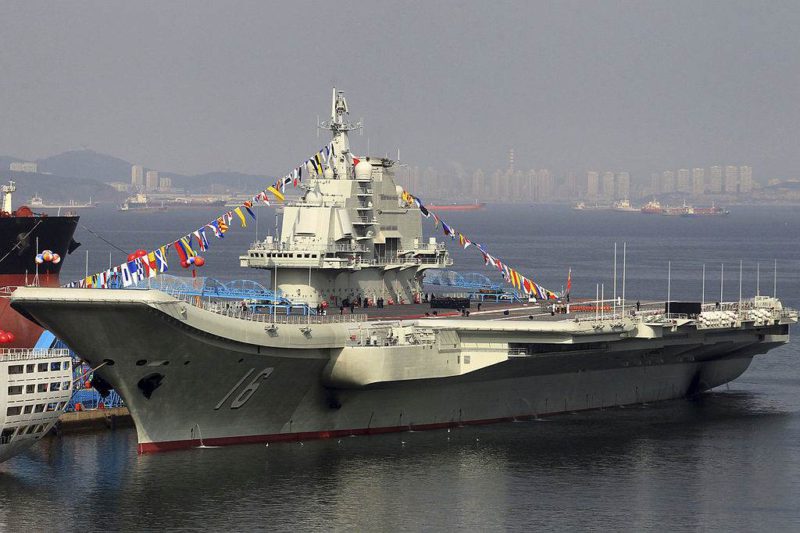The chaotic destiny of the Kuznetsov aircraft carrier : Laid down in 1982 as the Riga, she was launched in 1985 as the Leonid Brezhnev, tested throughout the later 1980’s under the name Tbilisi and finally commissioned on the 25th of December 1990 as the Admiral Kuznetsov. In January 1991, the Kuznetsov was enrolled in the Soviet Northern Fleet. The ship was still being tested in the Black Sea when the USSR collapsed.
On the 24th of August 1991, The Soviet Supreme acknowledged Ukraine as an independent state. Thus started negotiations between Russia and Ukraine on how to share / split ex Soviet military assets deployed or garrisoned on Ukrainian territory or waters… The Russians did not think about the Kuznetsov as it had been assigned to the Northern Fleet prior to Ukraine’s newly gained independence… Yet, in November 1991, Ukraine claimed ownership of the ship and ordered its Commander to steam for nearby Sevastopol.
This decision was unacceptable to the Russian Navy and was even less acceptable to Yuri Ustimenko, the then vice-admiral who was deputy commander of the Northern Fleet. The USSR had previously operated cruisers carrying planes such as the “Minsk”, “Kiev”, “Baku” and “Novorossiysk”, but those were designed to operate helicopters and VTOL style aircrafts. The Kuznetsov was an evolution of this design capable of operating jet fighters that could take off using a ramp and land using arresting gears. Russia could not afford to lose her…

It is difficult to find accurate accounts of what followed afterwards as on the Russian side, at least, it has entered folklore and many versions of the events exist.
Nevertheless; it seems vice-admiral Yuri Ustimenko either sent an order to the Kuznetsov Commander or traveled to Ukraine himself under a false name, boarded the aircraft carrier and met the commander face to face. What is certain, is that the ship received order to weigh anchor and escape Ukrainian waters and attempt a dash toward Severodvinsk, in Northern Russia. When the ship commander notified the vice-admiral that 2/3 of the crew were on shore; the reply was “They can take the train to catch up “. Similarly, when it was said the airwing was also on shore, the answer was “They can fly”. The priority for the Russian navy was to save its most modern heavy aircraft-carrying missile cruiser at all cost.
So that night, at some point between 11pm and midnight, sailing under full blackout, the Kuznetsov slipped out of Sevastopol and made a dash first for the Bosporus straight; then for Gibraltar, sailing North afterwards to join the Russian waters under control of the Northern Fleet. It took her over 3 weeks to get there.

The Kuznetsov did not received her aircrafts before 1993 and was only declared 100% operational in 1995. It is fair to say she has had a troubled life from the start and she has had her fair share of problems under Russian flag, due in most part to a troublesome power plant that has necessitated a lot of time in dry docks and teething problems needing several overhauls to remain operational.
But when one sees what happened to the other “aircraft carriers” of the Soviet era which ended up being owned and / or operated by either Russia or Ukraine, Kuznetsov must consider herself a lucky ship.
The Minsk ended up becoming an amusement themed park in China.
The Kiev was also sold to China and became a leisure park and later on a luxury hotel.
The Baku, renamed Amiral Gorchkov was sold to India where she became known as INS Vikramaditya.
The Novorossiysk was damaged by fire and sold for scrap in 1995.
The Riga, a ship of the same design as the Kuznetsov was still under construction when Ukraine became independent. She was renamed Varyag but Ukraine was in no financial state to finish the ship or operate her. In 1998, she was sold to China. The cover story supplied by the Chinese was that the Varyag would become yet another casino / theme park. But as soon as they acquired it, the Chinese announced the ship would be transformed, completed and operated by the PLAN. Varyag was overhauled, renamed Liaoning, completed in 2011 and commissioned in 2012.

There was one last Soviet era ship left in Ukrainian shipyard : The nuclear powered super-carrier Ulyanovsk. This was the first Soviet attempt to built a fully fledged Western style aircraft carrier. The Ulyanovsk, once completed, would have been larger than the older Forrestal class carriers but smaller than the Nimitz class ships. She was completed at 20% at the time of the break up of the USSR. Ukraine did not own the resources necessary to complete the ship and had no use for such a vessel. As a result, the Ulyanovsk was scrapped.
As for the Admiral Kuznetsov, after having had a major refit in 2015, she is now deployed West of Syria where she is about to fulfill her first combat mission 26 years after having been commissioned (21 years after having been declared fully operational). In the next two years, she is scheduled to undergo another refit where her Granit missiles silos might be removed. So far, it is not know if this is to replace them with the more modern and capable Kalibr missiles or if it is to transform the Kuznetsov from a heavy aircraft-carrying missile cruiser to a fully fledged aircraft carrier, thus keeping on following the chaotic destiny that is hers.









